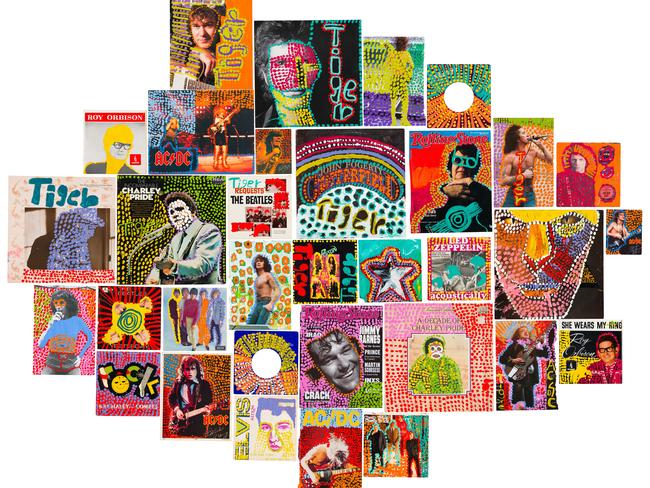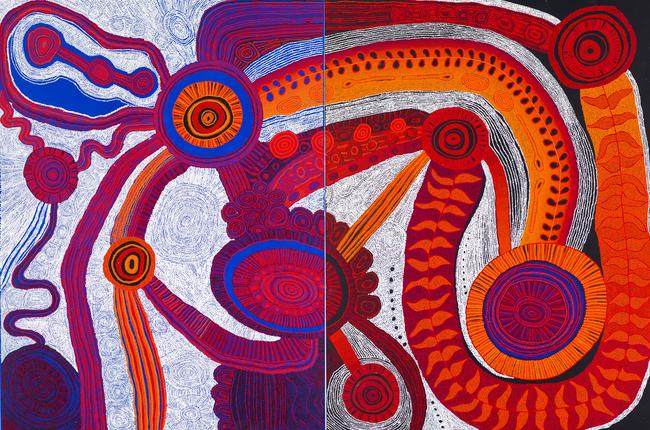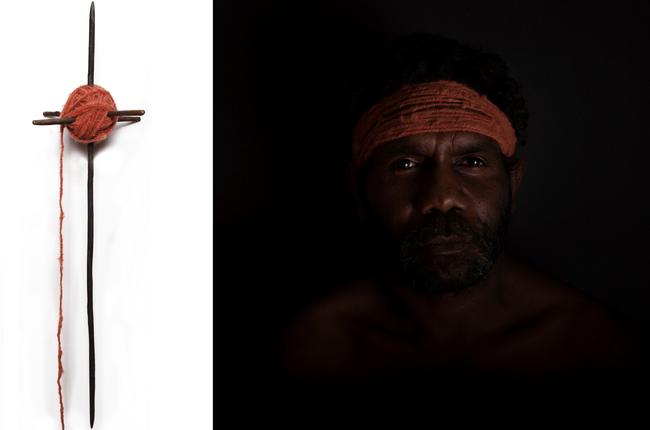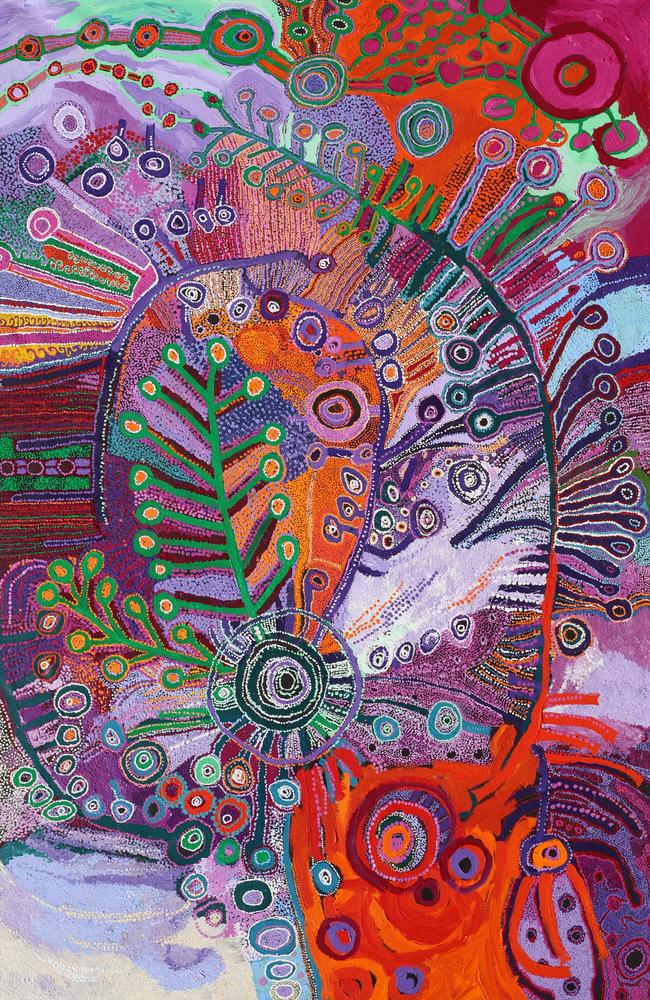Storied scenes in Telstra NATSIAA finalists’ artworks
Finalists in the Telstra NATSIAA awards, announced Friday night, give a wide-ranging picture of contemporary indigenous art practices.

Arts
Don't miss out on the headlines from Arts. Followed categories will be added to My News.
- SA artist Iluwanti Ken wins for works on paper at Telstra NATSIAA
- Timeless textiles, fresh styles at National Indigenous Fashion Awards
HIS eyes and much of his face hidden by one of the trademark Akubra hats which he repeatedly coats in acrylic paint until they become as heavy as sculptures – and are then sold as such – Tiger Yaltangki is one of the more readily identifiable characters in Indulkana.
Yaltangki is also among 16 South Australian artists, most from arts centres in the state’s remote northwest Anangu Pitjantjatjara Yankunytjatjara Lands communities, who are finalists in this year’s Telstra National Aboriginal and Torres Strait Islander Art Awards.
Largely non-verbal, Yaltangki’s artistic practice represents his primary form of self-expression. A compulsive drawer and mark-maker, he works every day at Indulkana’s Iwantja Arts.

Tiger’s vibrant and prolific artistic output often prominently depicts his own name and is closely informed by his love of music, as he paints his whimsical visual universe to an eclectic soundtrack which spans from classic rock to country.
His entry this year’s awards, titled Rock n Roll, is an assemblage of 33 pieces painted on 12-inch and 7-inch record sleeves, magazine pages, book covers, posters and postcards.
It’s a joyous celebration of the music and musicians that hold meaning for Yaltangki and inspire his work, from country crooners like Charley Pride, through The Beatles and Roy Orbison, via Creedence Clearwater Revival’s John Fogerty to heavy rockers like Jimmy Barnes and AC/DC.
Tina Baum, who selected the finalists with fellow curators Glenn Iseger-Pilkington and Luke Scholes, says the process was challenging.
“But it was also incredibly reaffirming to see the unique ways people are telling stories, the ways people are reinventing traditional forms and materials, and the generosity of our community in sharing the most personal, and often challenging stories, through their diverse practices,” Baum says.

Mother and daughter artists Betty Kuntiwa Pumani and Marina Pumani Brown, from Mimili, have each put their distinct perspective on a diptych – or two-panel painting – of Antara, an extremely important site for their family.
Marina picks up Betty’s marks and develops them into her own contemporary version of the stories she has been taught by the strong women in her family.
“Whilst my mother strictly paints Antara, I include other knowledge that is important to me and to our daily life in Mimili,” Marina says.
“When we go on these bush trips, we collect mingkulpa (bush tobacco) and care for the local tjukula (rock holes). Particularly after kapi pulka (big rains), the land becomes so fertile, and we harvest bush foods like the gnurru (lollie tree) and camp out on country like the old people used to. I like to take my daughter on these trips too and teach her about the stories and land.”

Also from Mimili, Robert Fielding’s work Puturu comprises a bronze spindle and a photograph, combining elements of his Afghan, Yankunytjatjara and Western Arrente heritages.
“The bronze cast inti (wool spinner) memorialises the process of spinning hair for puturu (traditional headband), that has existed for tens of thousands of years in our culture,” Fielding says.
“I have used camel and sheep wool, opposed to the traditionally used human hair, acknowledging the effects colonisation has had on our traditions. It also references my own heritage as a descendant of the first Afghan pioneers.”

The Tjala Women’s Collective from Amata painted Nganampa Ngura (Our Land), a 3m by 2m collaboration.
“All these years later Tjala Arts has grown and the old ladies and I who started this place are still here teaching our culture to younger generations every day,” says one of the senior artists, Nyurpaya Kaika. “Our art centre is the beating heart of Amata community.”
Telstra NATSIAA exhibition, Museum and Art Gallery of the Northern Territory in Darwin, until January 31. Online gallery at natsiaa.com.au
